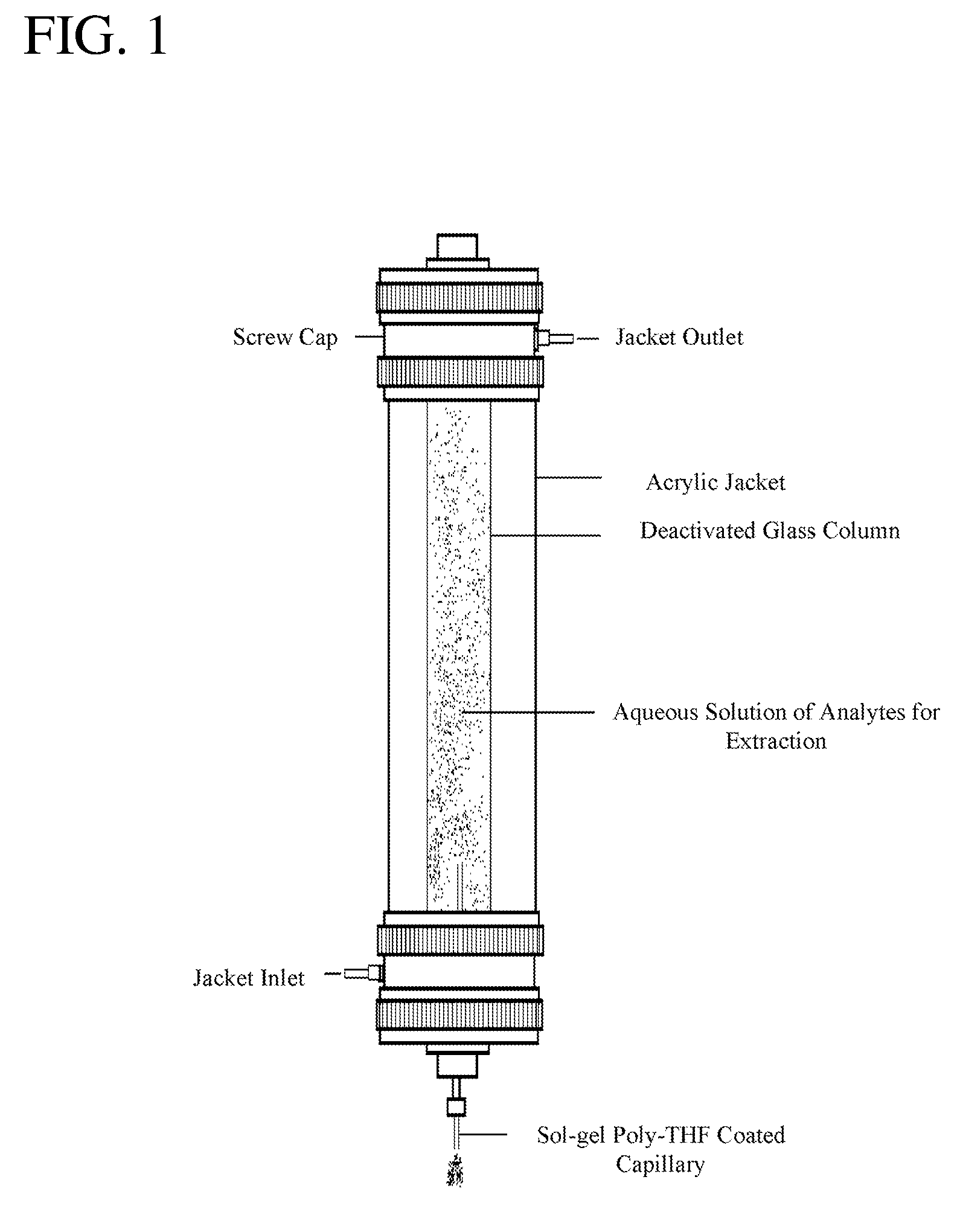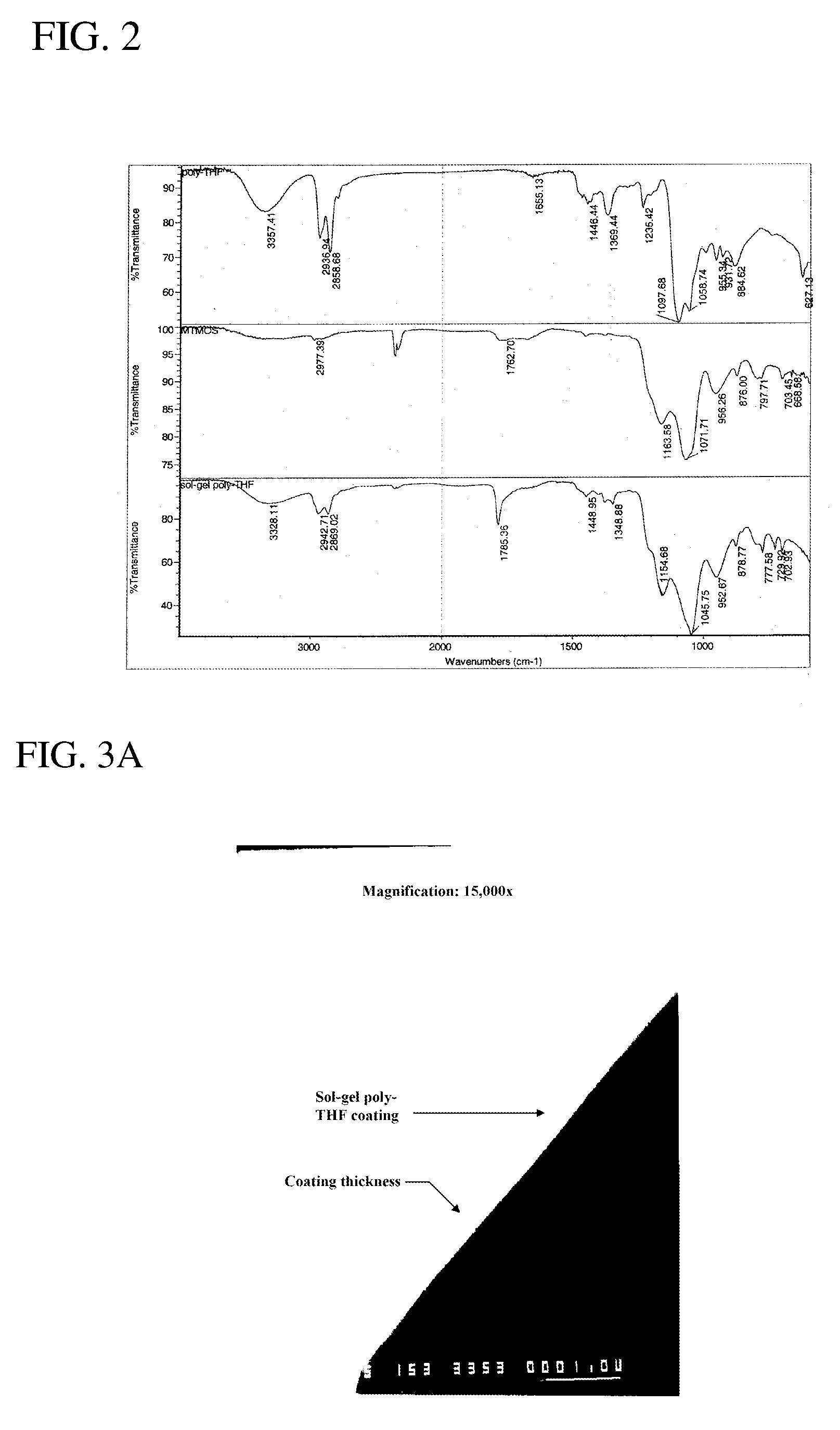Polytetrahydrofuran-Based Coating for Capillary Microextraction
- Summary
- Abstract
- Description
- Claims
- Application Information
AI Technical Summary
Benefits of technology
Problems solved by technology
Method used
Image
Examples
example
Development and Characterization of the Microextraction Capillary Having Surface-Bonded Sol-Gel Polytetrahydrofuran Coating
[0075] 1. Equipment
[0076] Capillary microextraction-gas chromatography (CME-GC) experiments with sol-gel poly-THF coated capillaries were carried out on a Shimadzu model 17A GC system (Shimadzu Corporation, Kyoto, Japan) equipped with a programmed temperature vaporizer (PTV injector) and a flame ionization detector (FID). An in-house designed liquid sample dispenser (FIG. 1) was used to perform CME via gravity-fed flow of the aqueous samples through the sol-gel poly-THF coated capillary. A Fisher Model G-560 Genie 2 Vortex (Fisher Scientific, Pittsburgh, Pa.) was used for thorough mixing of sol solution ingredients. A Microcentaur model APO 5760 microcentrifuge (Accurate Chemical and Scientific Corporation, Westbury, N.Y.) was used for centrifugation (at 13000 rpm, 15682 g) of sol solutions made for coating the microextraction capillaries. An Avatar model 320 ...
PUM
| Property | Measurement | Unit |
|---|---|---|
| Temperature | aaaaa | aaaaa |
| Temperature | aaaaa | aaaaa |
| Time | aaaaa | aaaaa |
Abstract
Description
Claims
Application Information
 Login to View More
Login to View More - R&D
- Intellectual Property
- Life Sciences
- Materials
- Tech Scout
- Unparalleled Data Quality
- Higher Quality Content
- 60% Fewer Hallucinations
Browse by: Latest US Patents, China's latest patents, Technical Efficacy Thesaurus, Application Domain, Technology Topic, Popular Technical Reports.
© 2025 PatSnap. All rights reserved.Legal|Privacy policy|Modern Slavery Act Transparency Statement|Sitemap|About US| Contact US: help@patsnap.com



